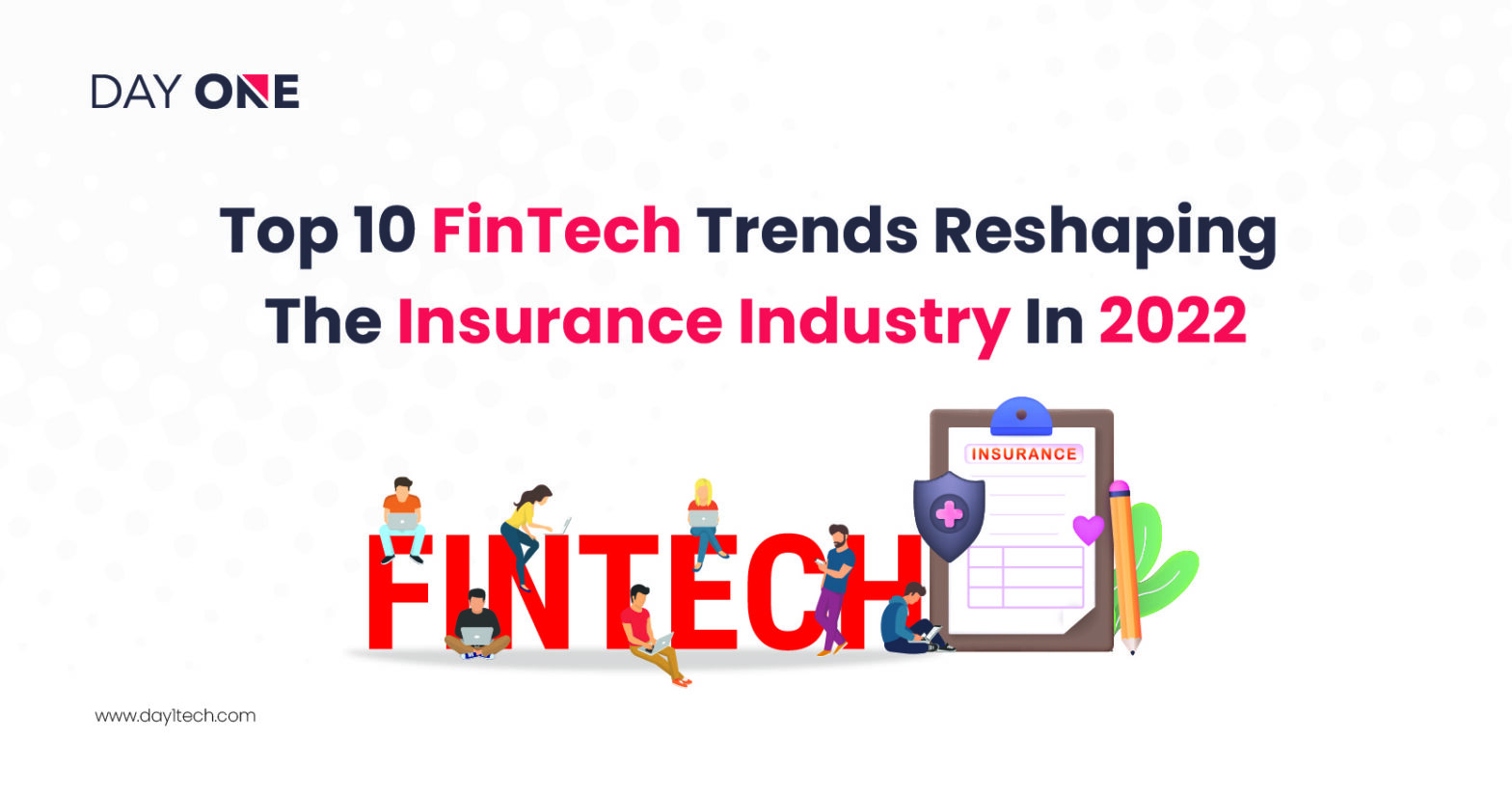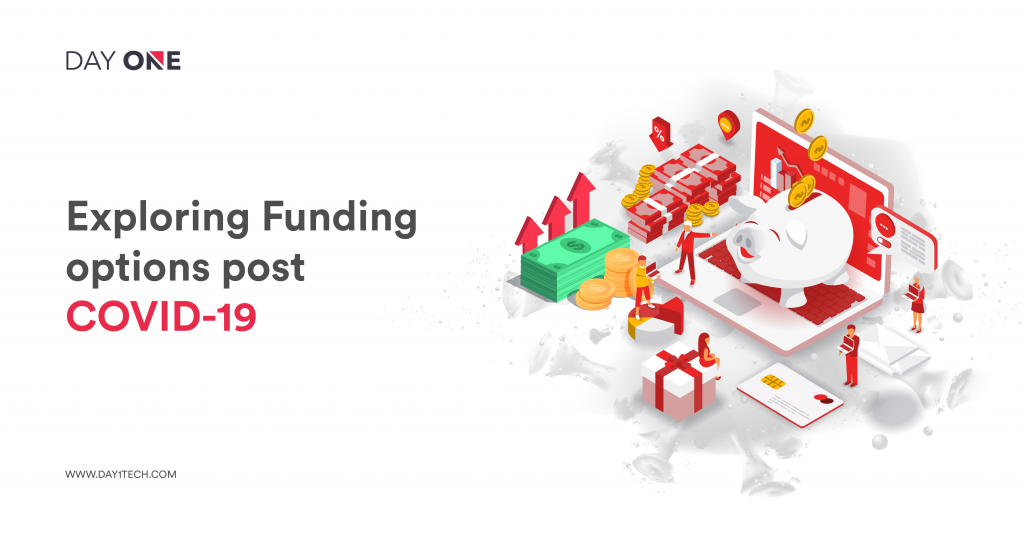Top 10 FinTech Trends Reshaping The Insurance Industry In 2022
Vijaykumar Meti
FinTech
April 25, 2022
6 min read

The world is changing at an incredible rate, and no industry is exempt from the need to adapt, update, and innovate. Global fintech is being impacted by mass digitization, artificial intelligence, machine learning, climate change, and the increase in financial-based cybercrime. Consumer expectations have shifted substantially as a result of firms like Netflix and Amazon, which have the technology and business strategies to deliver the quick access to products and services that today’s customers have come to demand. When these developments are considered, it becomes evident that no industry, especially one as old, sturdy, and reliable as insurance, can afford to remain static.
Advanced insurance technology is already a part of the Property and Casualty sector, benefitting both carriers and insureds. Obtaining insurance quotations is as simple as pressing a button, managing coverage is often handled using a smartphone app, and physical insurance cards are mostly obsolete.
Also Read: Top 10 Trends That Will Reshape The FinTech Landscape in 2022
While some of these technologies are already in use by specific carriers, we anticipate that they will become more widely used across the sector. Insurers seeking a competitive advantage should consider adopting one or more of these 10 emerging insurance technology trends.
1. CARE-Based Distribution Channels
Insurance businesses are engaged in a “digital arms race,” rushing to equip their distribution channels with digital capabilities to promote better consumer experiences. While CARE (see below) is the primary experience that most insurance firms strive to give in both their distribution and sales experiences, few achieve it consistently.
What exactly is CARE?
- Convenience – We should make it simple to purchase insurance.
- Advice – Our customers should have simple access to the information they need to make informed product purchases.
- REach – We should be able to reach our clients when they are most in need of and interested in our offerings.
In the next few years, insurance firms must constantly concentrate on digitizing all distribution channels to maintain competitive CARE standards.
Also Read: How FinTech Startups Are Making Life Easier
2. Quicker Payouts
Pay cycle time (the length of time it takes from the beginning to the end of a claim) is quickly becoming one of the most crucial differentiators between insurance providers. Future winners will rely on insurance technology to help them handle claims promptly and at the push of a button.
To that aim, businesses are using (or planning to use) AI-enabled solutions to automate estimation and inspection. Telematics solutions are projected to give higher levels of contextual information, allowing for easier, quicker, and more complete claim settlements.
3. The Rise of Usage-Based Models
The epidemic made people aware of the waste associated with paying for insurance on cars that lie unused in the garage, resulting in a significant increase in interest in usage-based insurance solutions in 2021. < As the nature of work changes and many people’s daily commutes become obsolete, winning insurance businesses will provide solutions that are more in line with how their customers live today. Telematics devices will allow insurers to provide packages depending on how and how far people drive. The increase in UBI insurance will be closely followed by an increase in commercial UBI, as demand from commercial vehicle firms and fleet operators is predicted to increase in 2022. Also Read: 5 Ways Artificial Intelligence Will Change FinTech
4. Cyber Attacks Prevention
2021 will most certainly be remembered as the year when cyberattacks surged rapidly, accompanied by a growth in the use of ransomware to extort money from organizations of all sorts.
While the industry has responded with cyber insurance, this only addresses half of the problem – it pays for restitution after an attack has occurred, but does little to prevent the attack from occurring in the first place.
In 2022, insurance firms will transition from payers to guardians, as predicted. Forward-thinking insurers will increasingly engage with cyber-security specialists to try to restrict the attack plane for bad actors and give a layer of protection that will help avoid assaults, rather than simply paying for restitution after the occurrence. < To that aim, a host of new cyber security solutions will hit the market. These will be of interest not just to major organizations – the usual buyers of cyber insurance – but also to small enterprises and even individuals, who will increasingly represent a new market for cyber insurance products.
5. Shorter Development Cycles for Applications
In today’s insurance industry, agility has become a key indicator of competitiveness. Previously, insurance firms would deploy new software every 6 months, or maybe every 3 months for those in a more aggressive growth stage, and the release cycle would last between 18 and 24 months.
Now, tech titans have established a new paradigm in which software is always changing, features are continually evolving, and things are released as soon as they can be imagined. To keep up with the expected pace, insurance firms must work hard to reduce application development cycles and accelerate time to market.
Also Read: These popular NLP applications are changing the face of Finance
This will demand a significant transformation in how businesses think about and create insurance software. Low-code platforms that can be modified dynamically and quickly without requiring extensive writing, deployment, and testing paradigms will be required.
Companies will need to be able to produce and deliver software as quickly as the market wants, therefore CICD (Continuous Integration and Continuous Development) will become the norm. In a world where issues such as cybercrime and climate change are causing a dynamic, constantly changing price environment, insurance firms must have the capability to adapt their products as the market changes.
6. Automated Intelligence
For a long time, the insurance sector has been experimenting with automation. The initial step was Robotic Process Automation (RPA), which was viewed as a means to speed up procedures while lowering costs without significantly altering any underlying systems. While this was great at grabbing low-hanging fruit – those ubiquitous repeating procedures that were an unwanted characteristic of so many insurance processes – it never truly tackled productivity and key activities that require automation.
The newest phase of intelligent automation, driven by AI and machine learning, is doing much more than just automating monotonous chores — it is automating the decision-making process itself. Intelligent automation is predicted to increasingly influence decision-making in underwriting, claims, and other aspects of operations in 2022 and beyond. This will not only speed up processes and cut costs, but it will also allow insurers to provide better consumer experiences — faster processing and faster deployment of tailored insurance products.
7. Climate Risk Modeling
Climate-related crises have become more common in recent years. Hurricanes, storms, floods, forest fires, tornadoes, and other natural disasters cause unprecedented losses in society and the insurance industry.
As a result of such losses, property insurance costs have skyrocketed during the last several years. However, if cost increases continue uninterrupted, insurance will become expensive. To offset this tendency, the sector will need to expand its awareness of risk and develop methods to more correctly and precisely estimate the impact of severe weather occurrences as well as the applicability of various measures.
Interesting Read: AI in Sports: Are you ready for Artificial intelligence in Games?
A prominent trend will be a shift toward resilience-oriented methods that minimize and lessen the losses connected with the incidents, similar to the prevention outlined previously in connection to cybercrime. Competitive insurance businesses will increasingly rely on big-data modeling tools capable of forecasting risks based on meteorological conditions. While this will be a lengthy road, 2022 will signal the beginning of a period in which these technologies will be given more thought and development than ever before.
8. Accurate Risk Pricing
There is now a lot of innovation aimed at improving the integrity of the link between risk and price. As a result, the types of models used by insurers have shifted dramatically. Linear, regression-type pricing methods are being phased out in favor of AI and Machine learning pricing strategies that provide more predictability and faithfulness to actual risk.
Insurers all across the world are deploying these new AI-powered models on a large basis. Even regulators are warming to these models, which do away with the reliance on credit scores, which discriminate against certain types of clients.
9. Sustainability and ESG are included in the strategy.
In a perilous world where malicious cyber activities and extreme weather are a continual concern, insurance firms must obtain control over apparently uncontrolled occurrences such as mega-events, social trends, and shifts that threaten the fundamental fabric of society.
While the insurance business has historically been a laggard in terms of social responsibility, it is now leading the way in terms of sustainability. Many insurers are actively working on climate measures, such as divesting from fossil fuel investments, refusing to cover extractive sectors, or refusing to insure carbon-based industries. Insurers are also progressively using global resilience techniques like flood protection and construction regulations to create a more sustainable and less dangerous global environment. Leading players will spend more resources on ESG (Environmental, Social, And Governance) as its importance develops in the sector.
10. Collaboration with Ecosystem Participants
The sale of embedded insurance products is perhaps the most significant of all the trends outlined here. Embedded insurance is the practice of selling insurance goods as part of another buying experience, significantly altering the way insurance is offered and consumed.
For example, a consumer may be provided insurance when purchasing a car or a home. In his post headlined “Would you like any insurance with that?”. Embedded insurance is becoming more popular as a result of the extensive usage of APIs, which provide an easy method to tie insurance sales to other client experiences.
Insurance firms will progressively adopt APIs in the next months and years to make themselves available to a much larger market. As insurance firms prepare to launch this “third leg” of distribution (direct digital distribution being the first, and agent-led distribution being the second), a considerable digital change will be required.
Final Thoughts
As we speak, many high-impact business developments are influencing and redefining the insurance market. To gain a competitive advantage, insurance firms must reinvent themselves by embracing agile technology that will enable them to tackle these new issues (and others) quickly, smoothly, and effectively as they occur. A competitive advantage based on client centricity, go-to-market agility, and the utilization of intelligent processes.
Insurance businesses are not required to do it alone. As traditional insurance businesses struggle to keep up with changing times, Day One delivers the insurance technology and assistance that insurers require to navigate the new trends.
Explore More Blogs
Testimonials What customers have to talk about us
Finch (previously Trio) – Growth with Investing, with benefits of Checking
Reading Time: < 1 minThe Finch (previously Trio), one of our clients today has reached this level with our expertise and with a great team of developers in Day One, who have made every stone unturned in making this project a big success.
Neel Ganu Founder
USA
Vere360 – VR based Immersive Learning
Reading Time: < 1 minDay One helped Vere360 “fill skill gaps” and build a platform that would cater to their niche and diverse audience while seamlessly integrate the best of #AI and #VR technology.
Ms. Adila Sayyed Co-Founder
Singapore
1TAM – Video Blogging Reimagined
Reading Time: < 1 min‘1TAM’ was only for iOS with gesture-based controls, advanced video compression techniques, and a simple architecture that allowed actions to be completed in 2-3 taps. The real challenge for ‘1TAM’ was to keep it distinct which bought brilliant results with all the strategies and approaches implied for best video compression techniques.
Anwar Nusseibeh Founder
UAE
Fit For Work – The Science of Workplace Ergonomics
Reading Time: < 1 minDay One Technologies came with the expertise that was required and helped in building a platform that is edgy, functional, and smart, delivering engagement and conversions at every step.
Ms. Georgina Hannigan Founder
Singapore
SOS Method Meditation for ‘Busy Minds’
Reading Time: < 1 minDay One Technologies helped in building an innovative mobile app (for #iOS and #Android) that’s easy-to-use, engaging, and data-driven to help users reap the most at every point.






